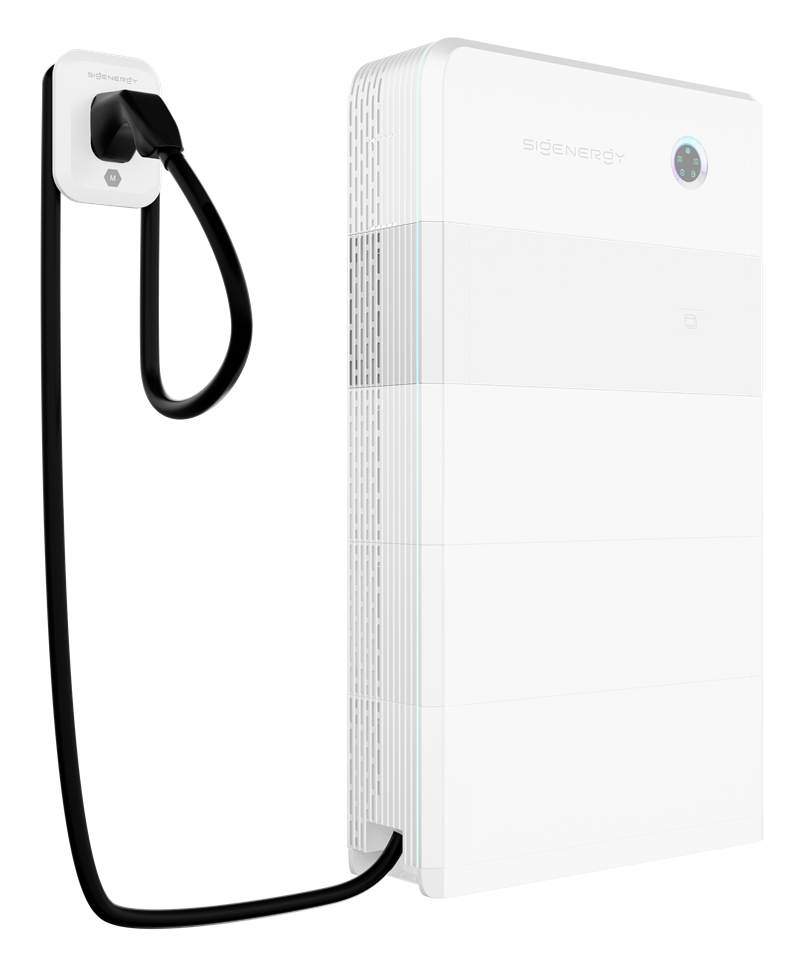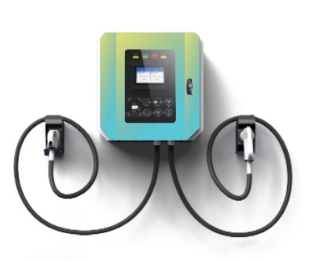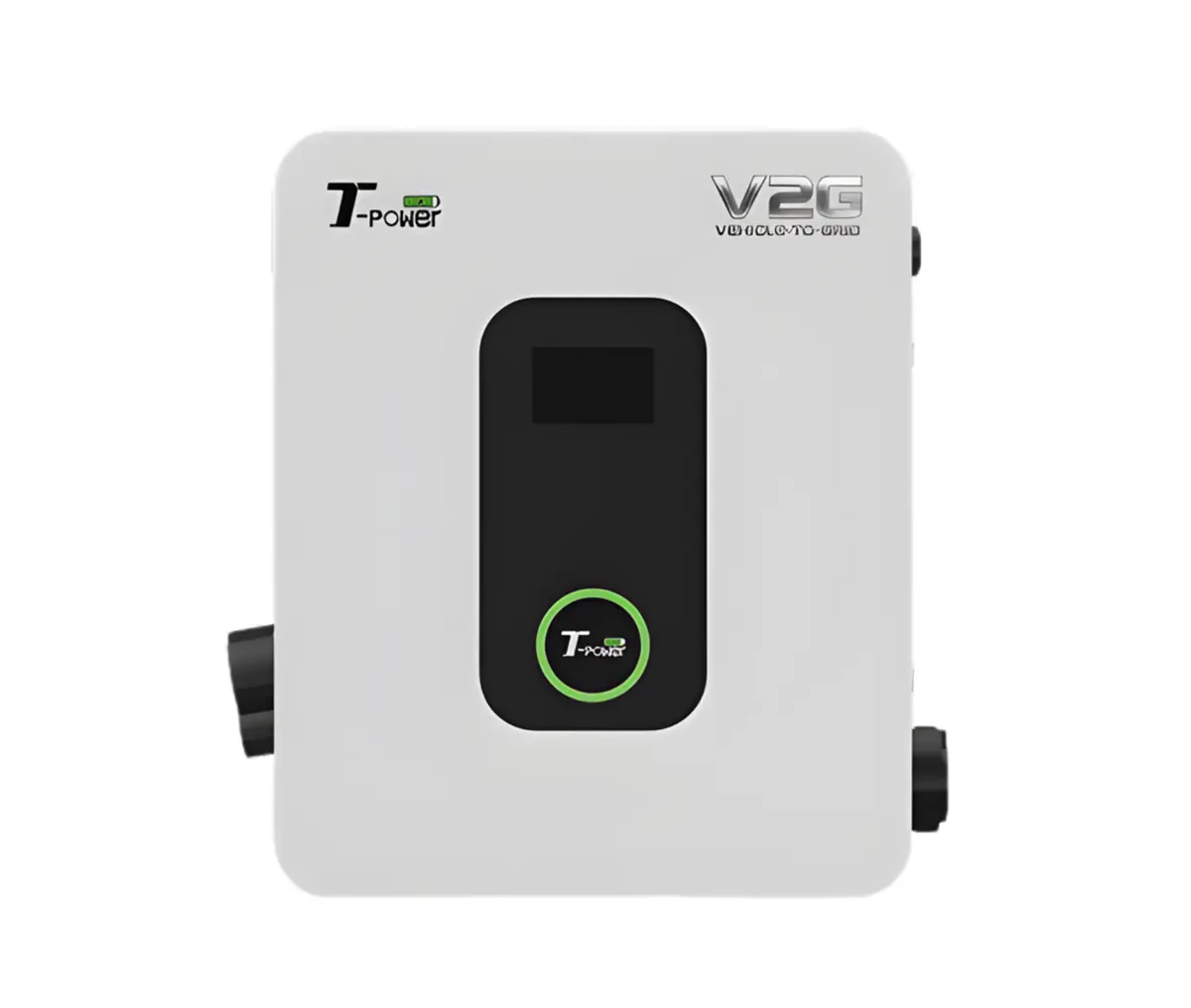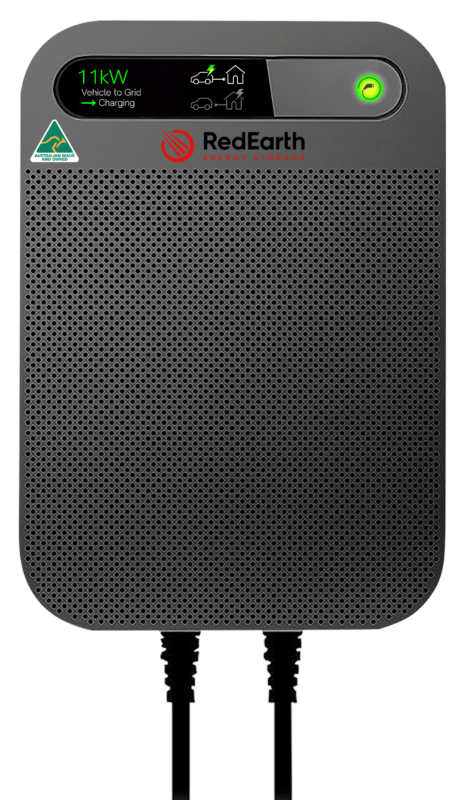If you’re searching for available V2G chargers in Australia, you’ve probably noticed the same thing we have: lots of hype about “vehicle-to-grid” and “using your EV as a home battery”, but very little clarity on what you can actually buy and install at home in 2025.
The short answer is: there are only a handful of V2G-capable or V2G-ready home chargers on the Australian market today and most of them still come with caveats around distributed network service provider (DNSP) approval, Virtual Power Plant (VPP) programs and EV compatibility. As of late 2025, the residential players to watch include DC options like Sigenergy’s Sigen EV module, V2Grid’s wallbox, StarCharge Halo and RedEarth’s Boomerang, plus emerging AC V2G-ready units such as T-Power’s V2G-AC22 and Zaptec Go 2.
This guide focuses on what Australian homeowners can actually buy or pre-order now, plus what available V2G chargers cost and what they can realistically do. Read it alongside Solar Choice’s comprehensive explainer on bidirectional EV chargers in Australia (V2G, V2H & V2L).
Table of contents
- Quick verdict: Can you buy a V2G EV charger today?
- V2G charger comparison (Australia)
- Should you wait to get a V2G charger or buy now?
- Costs, installation and power supply
- Load management, solar and batteries
- Tariffs, VPPs and how you could earn or save
- The future of V2G in Australia – what’s next?
- Frequently asked questions
Quick verdict: Can you buy a V2G EV charger today?
- Yes, but options are still limited to a handful of EV chargers.
- Availability does not necessarily mean compatibility; there are quite a few ducks to line up, most importantly whether your EV and the charger will play nicely together.
- Neither does availability mean it will be approved for connection to your local grid.
- Many EV makers are yet to update their warranties to include V2G use.
- Whatever you pick, it is essential to confirm both your DNSP’s connection rules and your EV manufacturer’s warranty position before enabling V2G.
- Charger hardware and installation costs can vary widely.
Compare EV Charger Quotes by Local Installers
V2G charger comparison (Australia)
The table below focuses on six key V2G or V2G-ready chargers either available in Australia now or opening for pre-orders in 2025.
Available V2G chargers in Australia 2025
| Brand & model | Sigenergy Sigen EV DC Charging Module | V2Grid residential wallbox (7–22 kW) | StarCharge Halo 7.4kW | T-Power V2G-AC22 Smart AC Charger | RedEarth Boomerang V2G charger | Zaptec Go 2 |
| Product Image |  |  |  |  |  |  |
| Typical price (AUD)* | From around $4,200 – 6200 exc installation | Around $10,090 hardware + $2,500 installation | Indicative price is $6,000 exc installation | Price TBC, see here for more info | $9,990 ex GST, exc installation | $1,999 exc installation |
| Connector (CCS2/ Type 2 / CHAdeMO) | CCS2 DC | CCS2 and CHAdeMO | Type 2 | Type 2 | CCS2 | Type 2 |
| Power (kW) | 12.5 or 25 kW | 7–22 kW AC | 7.4kW | 22 kW | 7.4kW/ 11kW | 7.4kW/ 22kW |
| Phase / supply | DC | 1-phase or 3-phase AC | 1-phase AC | 3-phase AC | DC | 1-phase/ 3-phase AC |
| Status (AU, 2025)** | Available now | Unclear; office number is disconnected. | Currently used in trials and exemption-based installs | Taking enquiries | Pre-orders open for 11kW available Feb 2026, 7.4kW available Q2 2026 | Available now |
| Warranty (yrs) | 3 years | TBC | 2 years | 2 years | 5 years | 5 years |
| Works with (tested/declared EVs) | Geely EX5, Volvo C40, BYD Atto 3, Ford F-150 Lightning | Unknown | BYD Atto 3 as per Origin trial | Unknown | Numerous models | Unknown |
| Notes | PV surplus charging, smart load management, OCPP, IP66 outdoor rating; used with Sigen Energy Controller | App available, with solar integration, load management | V2H/V2G modes, smart app and backend, IP65, multiple comms options (Wi-Fi, 4G, Ethernet, RS485) | Supports V2G/V2H/V2B/V2L, PLC, OCPP, IP65, dynamic power management and solar integration | V2G/V2H, OCPP, Ethernet WLAN, IP54 | IP54, onboard comms (4G, Wi-Fi), solar-aware 1–3 phase switching, OCPP |
| Where to buy / provider | Through Sigenergy partners and solar/battery installers | Direct from V2Grid and partnering installers | Via DNSP and trial partners | Direct from T-Power and selected solar/EV installers | Via Redearth sales channel and partner installers | Through Zaptec and EV charger installers |
| Product link | Website | Website | TBC | Website | Website | Website |
| Specifications | Product Data Sheet | Product Data Sheet | Product Data Sheet | Product Data Sheet | Product Data Sheet | Product Data Sheet |
*Installation prices are site dependent
**Status key:
- Available: Hardware can be bought and installed for standard EV charging today. V2G functionality may still depend on EV support, DNSP rules and retailer/VPP programmes.
- Trials / exemption: Typically installed as part of a DNSP, ARENA or utility trial, sometimes using network exemptions or project-specific approvals rather than generic mass-market connection rules.
- Coming soon / pre-order: Hardware exists and often meets relevant standards, but retail supply, local certification or VPP programmes are still being finalised.
^All data is current as at November 2025 and subject to change as products, prices and standards evolve.
Read our comprehensive guide if you want to know how many solar panels you need to charge an EV in Australia.
Should you wait to get a V2G charger or buy now?
If you want V2G immediately
You are in early-adopter territory. In practice that usually means:
- Applying to join a DNSP or retailer pilot that supplies and manages a DC V2G charger such as a StarCharge wallbox or similar. Example pilots include with AGL, Origin, and Amber.
- Accepting project-specific conditions, including export limits, minimum connection periods and firmware updates pushed by the trial partner.
- Risking voiding your EV battery warranty, if your brand has not updated it to include energy export or confirmed a waiver. If your battery warranty has expired, you can use V2G but be aware of the (low) risk of increased battery degradation.
Outside structured programmes, you might work with a specialist installer to deploy a Sigenergy DC module or similar, but you will still need your DNSP’s written approval and clear confirmation that your EV is warranted for routine charge–discharge cycling.
If you can wait 6–12 months
Waiting has a few advantages:
- More CCS2 EVs will arrive with bidirectional-ready hardware and ISO 15118-20 support.
- AC V2G chargers like T-Power’s V2G-AC22 and Zaptec Go 2 are likely to gain clearer software roadmaps, local certifications and VPP integrations.
- Retailers and networks will have had more time to sort out tariffs, export rules and connection standards, so you are less reliant on one-off exemptions.
- For many households a good compromise is to install a V2G-ready AC charger now (for example the Zaptec Go 2) and use it as a normal smart charger while the standards and tariffs catch up. That way you are not locked out of future features, but you are not paying DC hardware prices today.
Costs, installation and power supply
Bidirectional chargers sit at the premium end of the home charging spectrum.
- AC V2G wallboxes (11–22 kW): expect prices broadly in line with top-tier smart chargers, with a V2G premium on top. Hardware like the T-Power V2G-AC22 and Zaptec Go 2 will likely land above mainstream 22 kW units but below DC options.
- DC V2G wallboxes (7–25 kW): hardware alone typically starts around $4,000–$10,000 and can rise several thousand once you include installation, switchboard upgrades and commissioning. Sigenergy, V2Grid, StarCharge and Boomerang all live in this zone.
Key cost drivers:
- Single-phase versus three-phase supply and any need to upgrade your connection.
- Length of cable runs, trenching and switchboard space.
- Electricity network engineering approval and export limits.
- Commissioning time for apps, OCPP platforms and VPP onboarding.
General home charger cost guides can be useful to sense-check budgets before you fall in love with any particular model.
Load management, solar and batteries
For homes with rooftop PV and possibly a stationary battery, look for:
- Dynamic load management (DLM), so your charger throttles itself instead of tripping the main breaker when the oven and heat pump are on.
- PV surplus charging modes, where the charger biases towards soaking up surplus solar.
- Smart apps and OCPP support. This makes it easier to integrate tariffs, VPPs and third-party energy management down the track.
If you are planning a full system design, it is worth folding in solar, battery and V2G thinking at the same time rather than bolting pieces on later.
Tariffs, VPPs and how you could earn or save
The value of V2G does not come from the hardware alone; it depends on the tariff or VPP programme you plug into.
In broad terms:
- Wholesale-linked plans like Amber and time-of-use plans reward you for charging when energy is cheap and discharging when it is expensive.
- Virtual Power Plant (VPP) programmes pay you (in bill credits or cash) to let the operator control your EV battery at certain times, within agreed limits.
V2G-capable chargers and EVs can:
- Soak up excess solar or off-peak power during the day.
- Feed energy back into the home during the evening peak, cutting import costs.
- Export to the grid when prices spike, if your DNSP and retailer allow it.
Some modelling and early field trials suggest meaningful bill reductions – up to around 30 per cent in ideal scenarios – but that is best viewed as an upper bound for highly engaged users on sharp tariffs rather than a guaranteed outcome for every household. Compare VPP providers here.
The future of V2G in Australia – what’s next?
Over the next few years expect:
- Car manufacturers to update battery warranties to include V2G.
- More CCS2 EVs to ship with ISO 15118-20 and explicit V2G support.
- More AC chargers like Zaptec Go 2 and T-Power’s V2G-AC22 to move from “V2G-ready” to actively participating in VPPs and retailer programmes.
- Electricity networks to refine export rules and connection processes so that V2G looks less like a special-case engineering project and more like a standard product.
For now, V2G is still closer to the bleeding edge than the everyday driveway. But the hardware listed here shows that the building blocks are finally arriving. If you are happy to live on the frontier, there are ways to get started today. If you would rather let others shake down the bugs, a V2G-ready AC charger and a compatible EV put you in a good position for the next wave.
Compare EV Charger Quotes by Local Installers
Frequently asked questions
Savings depend heavily on:
– Your driving pattern and daily kilometres.
– Battery size and how much of it you are willing to cycle for the grid.
– Tariffs, VPP payments and network limits where you live.
– In a well-optimised setup with the right plan, V2G can reduce bills significantly, but it is not a magic money machine.
One advantage of getting a DC V2G charger is that your power input and output won’t be limited as much by your EV’s onboard charger. For example, a budget basement BYD Atto 1 can only charge at 7kW on AC, but could take advantage of a 22kW DC charger.
– DC V2G (Sigenergy, StarCharge, Boomerang, V2Grid) is more mature for full V2G today, especially with CHAdeMO EVs. It costs more, but gives fine-grained control over power flows and suits fleet depots or serious VPP participation.
At the end of the day it may come down to costs, however.
– AC V2G (T-Power V2G-AC22, Zaptec Go 2) uses cheaper hardware and standard Type 2 sockets, but still leans on evolving ISO 15118-20 support and DNSP/retailer rules. It is the likely mainstream path for CCS2 cars from the late-2020s onward.
In simple terms:
– V2G: Stands for vehicle-to-grid, meaning your EV exports to the grid.
– V2H: Stands for vehicle-to-home, meaning your EV powers your home, usually through a bidirectional charger.
– V2L: Stands for vehicle-to-load, meaning your EV powers individual appliances via a built-in socket or adapter – handy for camping and blackouts, but not the same as a whole-home or grid-connected system.
It might, if you use non-approved hardware or programmes. Most EV warranties today are written around one-way charging. Always seek written confirmation from your EV manufacturer before enabling any bidirectional features.
Not always. Some DC chargers (for example 7.4 kW units) can run from single-phase, and the Nissan Leaf has been used that way in trials. But higher-power AC V2G chargers like the T-Power V2G-AC22 and 22 kW modes on Zaptec Go 2 do require three-phase.
In principle yes: current standards allow for bidirectional inverters and EV chargers, but each device still needs to be certified and each connection must meet your DNSP’s rules. Some projects operate under specific exemptions while energy providers and carmakers catch up.
- Available V2G EV Chargers in Australia Compared (2025) - 25 November, 2025
- Soltaro AC EV Charger – An Independent Review by Solar Choice - 19 September, 2025
- How Long to Charge an Electric Car? EV Charging Times (2025 Guide) - 19 September, 2025
